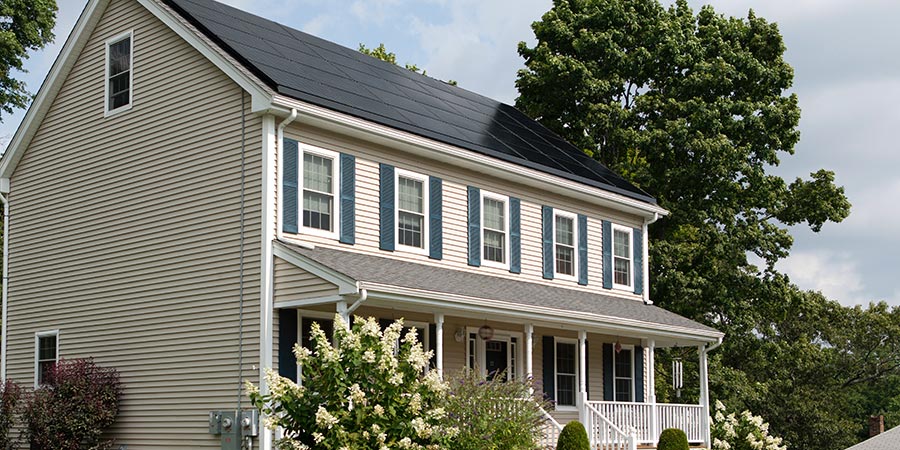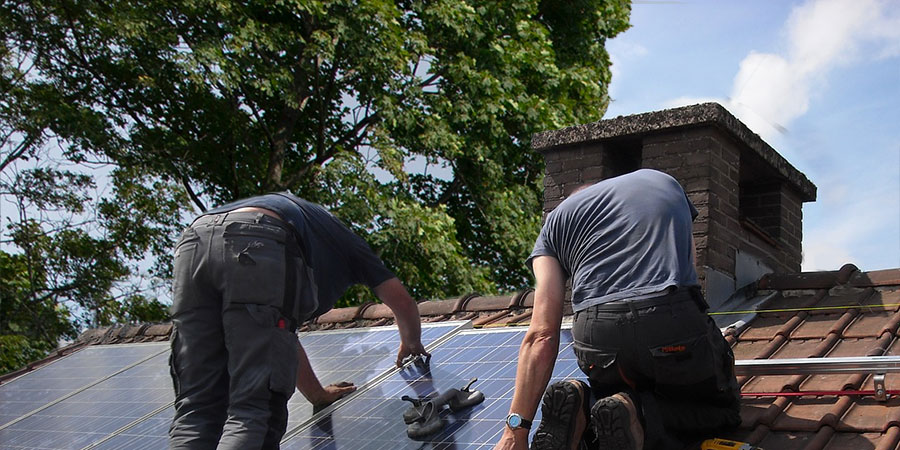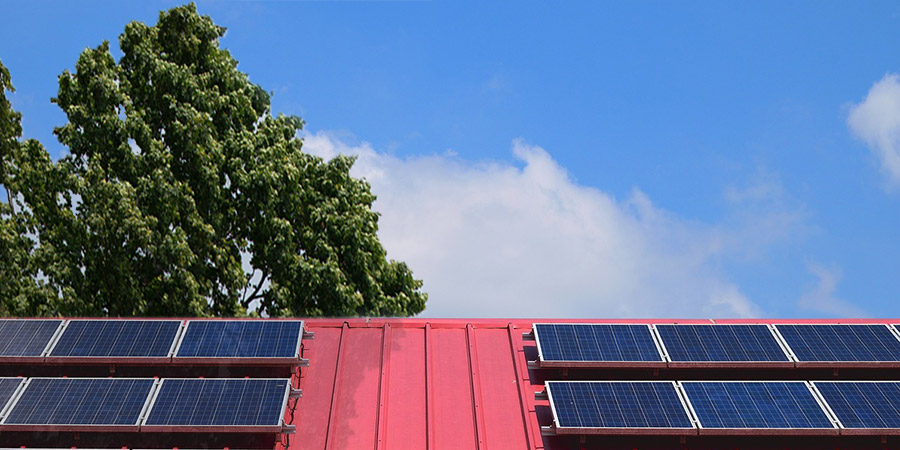Solar panels represent a promising stride towards a greener future, offering a clean alternative to fossil fuels. Made of intricate arrays of solar cells, they capture photons from the sun, translating them into energy that powers homes, industries, and even some modes of transportation. However, like all technologies, they come with nuances that can affect their performance. Beyond the mechanics and the science that makes them operate, external factors in their environment can pose challenges.
Partial shading, a seemingly minor issue, can ripple into larger operational concerns, sometimes undermining the very efficiency that solar panels are known for. As we transition to a more eco-conscious world, understanding and addressing these challenges becomes paramount. This article aims to provide a comprehensive insight into the world of PV panel shading, its implications, and the modern solutions crafted to mitigate its effects. Let’s delve into it.
Shading on Solar Panels and How it Affects Them
At its core, a solar panel comprises multiple solar cells. These PV panel cells capture sunlight and produce electricity.
Typically, PV panel cells in a solar panel are connected in series, forming a solar panel array. Crystalline silicon solar panels are among the most popular and widely used.
The way solar panels work is straightforward. Sunlight hits the solar cell, exciting electrons and creating an electric current.
However, for the entire system to work at its maximum power, each cell in the solar panel array needs to receive consistent sunlight. If even one solar panel or a part of it gets shaded, it can disrupt the flow of current, leading to diminished power output.
The problem is particularly evident in typical photovoltaic solar panels. When solar panel shading occurs, the shaded PV module produces less current than its counterparts.
Because PV panel cells in the array are connected in series, the entire solar panel’s output gets limited by the weakest link – in this case, the shaded solar cell.
Understanding Solar Panel Efficiency
Solar panel efficiency refers to the measure of how effectively a solar panel can convert sunlight into usable electricity. In essence, it’s an indicator of a panel’s performance and quality.
While the sun showers the Earth with abundant energy every day, not every photon striking a solar panel gets transformed into electrical power.
The efficiency of a solar panel is typically presented as a percentage. For instance, if a solar panel has an efficiency rate of 20%, it means that 20% of the sunlight that hits the panel is converted into electricity. The rest is either reflected away or lost in the conversion process due to various factors.

Implications of Partial Shading
Partial shading, while it might sound innocuous, can have a series of cascading effects on a PV panel array, particularly impacting its efficiency and longevity.
By diving deeper into the consequences of this phenomenon, we can better appreciate the design and innovations aimed at addressing it.
1. Reduced Power Output
One of the most immediate consequences of partial shading is the reduction in power output. Solar panels function optimally when exposed to uniform sunlight across their entire surface.
When even a small section is shaded, it can substantially reduce the current generated by the entire panel.
Given that a standard PV panel array consists of a series of interconnected panels, the output of the whole system can be compromised by shading just a fraction of its total area.
This domino effect means that a shaded module produces electricity at a reduced rate, pulling down the output of interconnected modules.
2. Creation of Hot Spots
Another less evident but equally concerning implication of partial shading is the creation of “hot spots.” When a part of the solar panel gets shaded, the cells in that region don’t produce as much electricity.
However, they can still absorb a significant amount of energy, which, instead of being converted into electricity, gets transformed into heat.
This can lead to localized areas of high temperature or “hot spots.” Over time, these hot spots can degrade the solar cells, reducing their efficiency and lifespan.
3. Imbalanced Load Across the Solar Array
The consistency of power generation across a PV panel array is crucial for its overall performance. When part of the array faces shading, the affected panels produce lower power than their counterparts.
This leads to an imbalanced load, where the non-shaded panels have to compensate for the reduced output of the shaded ones. Over time, this imbalance can lead to faster wear and tear of the non-shaded panels as they work harder to maintain the solar system’s overall performance.
4. Economic Implications
When investing in a solar energy system, users anticipate certain savings on their energy bills over time. Partial shading can significantly reduce the expected power output, leading to lower energy savings.
As a result, the return on investment (ROI) for the solar installation can be adversely affected, extending the payback period for the system.
5. Compromised Lifespan of the Solar System
As touched upon earlier, the hot spots and imbalances induced by partial shading can accelerate the degradation of solar panels.
This not only impacts their efficiency but can also shorten the overall lifespan of the entire solar system. Replacements and repairs might become frequent, leading to increased maintenance costs.
Partial shading, often overlooked, can have considerable implications on the efficiency, longevity, and economic viability of a solar array.
By understanding these consequences, users and installers can take proactive steps to minimize the risks associated with shading, ensuring the solar system delivers its promised performance over the long term.
Addressing the Shading Issue
Solar panel shading poses one of the most common yet significant challenges in harnessing solar energy efficiently. It’s imperative for anyone investing in solar technology to be aware of these challenges and, more importantly, understand the solutions available.
Let’s explore how the industry and technology address the shading issue, ensuring that solar installations work optimally despite environmental and structural obstacles.
1. Bypass Diodes: The First Line of Defense
Bypass diodes are integrated within solar panels, acting as crucial safeguards against the effects of shading. When a portion of the entire solar panel is shaded, it hampers the flow of current through that particular section.
However, with bypass diodes in place, the current can circumvent or “bypass” the shaded solar panels. This ensures that the whole system doesn’t suffer a considerable loss in power output due to a shaded section. By effectively redirecting the current, bypass diodes play a pivotal role in maintaining the performance of the solar array amidst shading challenges.
2. Module Level Power Electronics (MLPE): Enhancing Efficiency at the Source
One of the most innovative solutions in addressing solar panel shading is the introduction of module-level power electronics (MLPE). These are sophisticated electronic components designed to optimize power production at the individual panel level. Instead of managing the power output of the entire system as one unit, MLPEs enable each panel to operate independently. This means that even if a couple of panels are shaded, others in the array can still produce power at their maximum potential. By decentralizing power management, MLPEs ensure that the inefficiencies of one panel don’t drag down the performance of the entire system.
3. Maximum Power Point Tracking (MPPT): Intelligent Energy Management
Maximum Power Point Tracking (MPPT) technology is a game-changer when it comes to optimizing the energy output of solar installations. It continuously monitors the energy output of the panels and adjusts it to ensure it’s always operating at its peak efficiency, even in variable lighting conditions. For instance, if a cloud casts a shadow on some of the panels, MPPT technology will adjust the system’s parameters to extract the maximum possible power. This ensures that even when facing solar panel shading, the system can still operate close to its maximum energy level.
4. Strategic Installation and Panel Positioning
Often, the most straightforward solutions are the most effective. Strategic positioning of solar panels can reduce the potential for shading significantly. By conducting a thorough site analysis, installers can identify potential sources of shading throughout the year, from seasonal changes in the sun’s angle to obstacles like trees and structures. Panels can then be positioned in a manner that minimizes the impact of these shade sources. Sometimes, a slight angle adjustment or choosing a different mounting location can make a world of difference.
5. Regular Monitoring and Maintenance
Lastly, staying proactive is key. Regularly monitoring the performance of the solar system can help identify any drop in power output due to shading. Solutions like MLPEs often come with monitoring systems that provide real-time insights into the performance of each panel. If a decline in efficiency is observed, it may be due to shading, dirt, or debris. Regular maintenance, including cleaning and inspection, can ensure that the panels are always in their best shape. For easy roof access during these maintenance routines, installing a BAC-RAH roof access hatch can be highly beneficial.
Solar panel shading can, at first glance, seem like a daunting challenge, but with advancements like bypass diodes, MLPE, and MPPT, along with strategic installations, the issue is far from insurmountable. By leveraging these solutions and maintaining a proactive approach, solar system owners can ensure their installations continue to deliver optimal performance and robust returns on investment, irrespective of occasional shading hurdles.

Additional Strategies to Combat Solar Shading and Increase Efficiency
1. Optimal Placement
Before installing solar panels, a comprehensive study of the site’s solar potential is essential. This analysis identifies potential shading sources and helps in placing the panels to minimize solar shading throughout the day and year.
2. Regular Cleaning
Dust and debris can cause partial shading. By ensuring solar panels are clean, one can maintain optimal power output.
3. Use of Advanced Systems
As discussed earlier, modern solar panels equipped with features like MLPE and MPPT can handle partial shading better than older models.
4. Tree Trimming
If trees cause shading on solar panels, periodic trimming can ensure that the panels receive consistent sunlight.
5. Monitoring
Keeping a constant check on the performance of your PV panel array can help identify issues related to partial shading. If a sudden drop in performance is noticed, shading might be the cause.
Conclusion
Solar power is an environmentally friendly and sustainable source of energy. However, like any technology, solar panels have their challenges. Partial shading can significantly affect a solar system’s efficiency, but with the right knowledge and tools, its impact can be minimized. By understanding how solar panels work and the implications of shading, users can implement strategies to ensure that their systems operate near their maximum power, thereby securing a consistent energy supply.
Remember, while the installation and maintenance might require some attention to detail, the benefits of a solar power system – both to the environment and your electricity bills – are undoubtedly worth the effort. Ensure your system is free from shading issues and harness the sun’s power to its fullest!


Leave a Reply